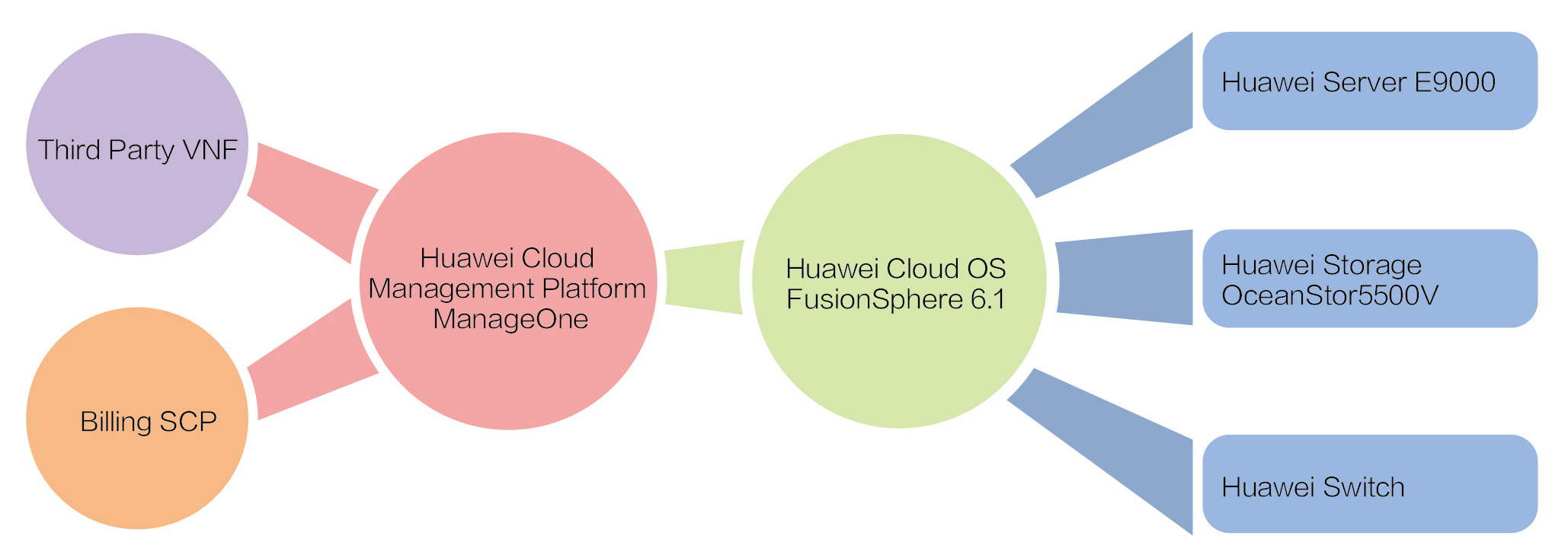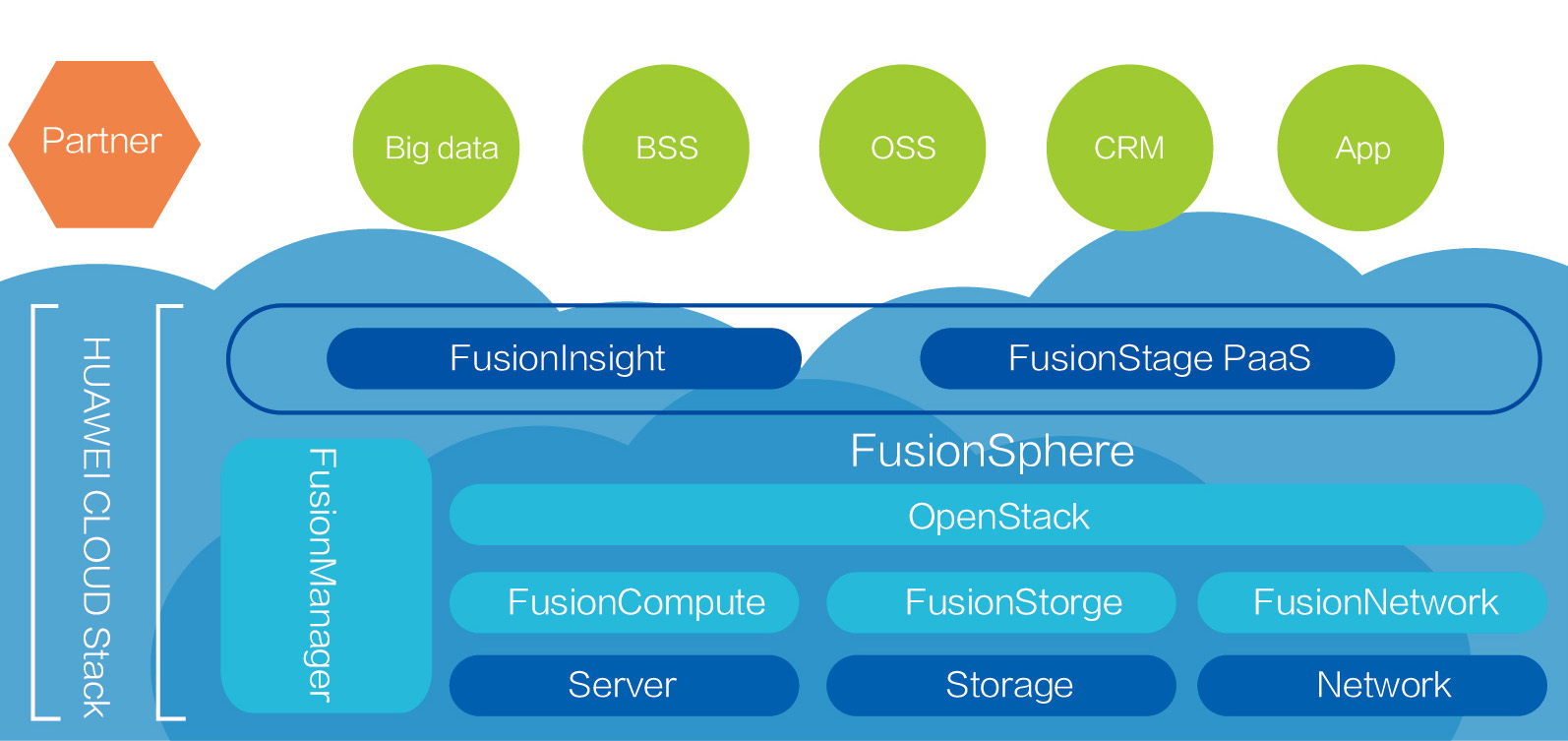Ecosystem-based Cooperation Fuels the Next Phase of Carrier Development
This site uses cookies. By continuing to browse the site you are agreeing to our use of cookies. Read our privacy policy>
![]()
Enterprise products, solutions & services

Full-scale cloud or digital transformation of carriers is inevitable. Carriers face stagnant revenue growth in spite of the rapidly growing volume of data on their networks. Transformation is the only way for these companies to upgrade network architectures, improve operational efficiency and cost structures, and, most importantly, reduce their persistently high Operating Expenses (OPEX) — which can account for over 60 percent of business expenditures. They also need new cloud-based Information Technology (IT) infrastructure to support the development of new cloud-enabled services, like video and the Internet of Things (IoT). Carriers hope to leverage the new services to spur revenue growth. In addition, Over-The-Top (OTT) and other Internet-based service providers are cutting into carriers’ traditional businesses. Carriers rely on a cloud-based approach to strengthen their technical capabilities, organizational structures, and business models, and to weather increasingly fierce inter-industry competition.
The biggest challenge for carriers during cloud transformation is the need to support the co-existence of various business scenarios (IT, CT, and application), deployment modes (private cloud, public cloud, and hybrid cloud), and a variety of resources (physical machines, virtual machines, and containers). To overcome such a challenge, they need an Information and Communications Technology (ICT) partner with a solid technical background, a comprehensive product portfolio, and a mature ecosystem.
Through three decades of stable operation, constant innovation, and open cooperation, Huawei has grown into a leading global provider of ICT solutions, with a considerable competitive edge in terms of product line and end-to-end technology. By 2016, Huawei’s carrier products and solutions had been used in more than 170 countries to serve one third of the global population. Of the 50 largest carriers in the world, 45 are Huawei customers; and over 100 carriers have chosen to partner with Huawei during their digital transformation. In addition, Huawei’s market dominance has given it a significant voice in the formulation of international telecommunication and interconnection standards. Huawei is involved in over 360 standardization organizations, industry associations, and open-source communities, including IEEE-SA, ETSI, TMF, WFA, WWRF, OPNFV, and CCSA, holding key positions in over 300 of these organizations.
Huawei’s IT solutions have earned very favorable rankings in publications issued by IDC, Gartner, and GlobalData. For example, its government cloud solution, FusionInsight big data solution, and FusionAccess desktop cloud solution all rank first in China in their respective categories; the FusionSphere virtualization solution ranks higher than all comparable solutions from other Chinese vendors; Gartner includes FusionInsight in its Magic Quadrant for Data Management Solutions for Analytics (DMSAs); and GlobalData names Huawei’s Network Functions Virtualization infrastructure (NFVi) solution as the global leader for NFVi solutions.
Huawei makes a strong case that it is the optimal partner for carriers. It offers a full range of IT and ‘Leading New ICT’ products covering cloud, big data, and Artificial Intelligence (AI). HUAWEI CLOUD Stack (HCS) — Huawei’s full-stack hybrid cloud solution — provides unified services, management capabilities, and Application Programming Interfaces (APIs) across public and private clouds, which facilitates the digital transformation of carriers. HCS doesn’t just consist of hardware equipment like servers, storage systems, and switches; it also includes powerful software components, such as the ManageOne cloud management platform, FusionStage Platform-as-a-Service (PaaS) platform, FusionSphere OpenStack Infrastructure-as-a-Service (IaaS) platform, FusionCompute compute virtualization software, FusionStorage storage virtualization software, and FusionNetwork Software-Defined Networking (SDN) software. Huawei also provides professional services, such as planning, integration, and migration, to better facilitate carriers’ evolution toward a cloud-empowered future. At Huawei Connect 2018, Huawei debuted its AI strategy and full-stack, all-scenario AI solution. Huawei is dedicated to advancing the AI sector by working with partners from many different industries and building an intelligent world where everything is interconnected.
Huawei’s leading position in the carrier infrastructure market means that Huawei is often the bridge by which Independent Software Vendors (ISVs) and Service Integrators (SIs) reach carriers. Through joint marketing, ISVs or SIs and Huawei can complement each other and expand their respective market shares. In the TMF and NFV fields specifically, joint marketing enhances the reputation of both parties, and sharing resources facilitates the development of a healthy ecosystem. To Huawei, cooperation with ISVs and SIs facilitates IT Outsourcing (ITO) projects and helps solve compatibility issues in projects where hardware and upper-layer applications are tightly coupled.
Huawei is enthusiastic about cross-domain cooperation. It has collaborated with market leaders to jointly develop solutions for specific sub-fields. For instance, it is co-developing a billing system cloudification solution and a FusionStage-based CRM solution with partners in the Business Support System (BSS) domain. Similarly, in the video processing domain, video cloud and video coding and decoding solutions are under joint development.
Partner A lacked underlying hardware and management platform software. Huawei was able to provide Partner A with FusionSphere 6.1, ManageOne, E9000 servers, and OceanStor 5500 V3 storage systems. Together they launched a joint solution comprised of a Huawei NFVi platform, third-party Virtualized Network Functions (VNFs), and a billing system developed by Partner A. This solution eliminates carrier pain points when moving multiple services to the cloud and reduces their CAPEX and OPEX. Since its release, the solution has been adopted by many carriers.

Figure 1. BSS Joint Solution
Verified by many carriers in China and around the world, Partner B’s products are well-regarded by customers such as Telenor, China Mobile, and CITIC Bank. The solution that Huawei and Partner B developed together expanded both parties’ influence and competitiveness in their respective industries. Because HCS is fully compatible with Partner B’s Veris CRM, the jointly developed solution utilizes a micro-service architecture and supports container-based deployment to rapidly respond to market demands. In addition, its ‘PaaS + IaaS’ architecture is capable of elastic scaling, a feature that improves the resource utilization efficiency of carriers.

Figure 2. CRM Cloud Migration Joint Solution
Huawei will deepen its cooperation with partners to develop tailored solutions for carriers. It will also build telecom cloud and big data ecosystems to help make carrier digital transformation as smooth as possible.